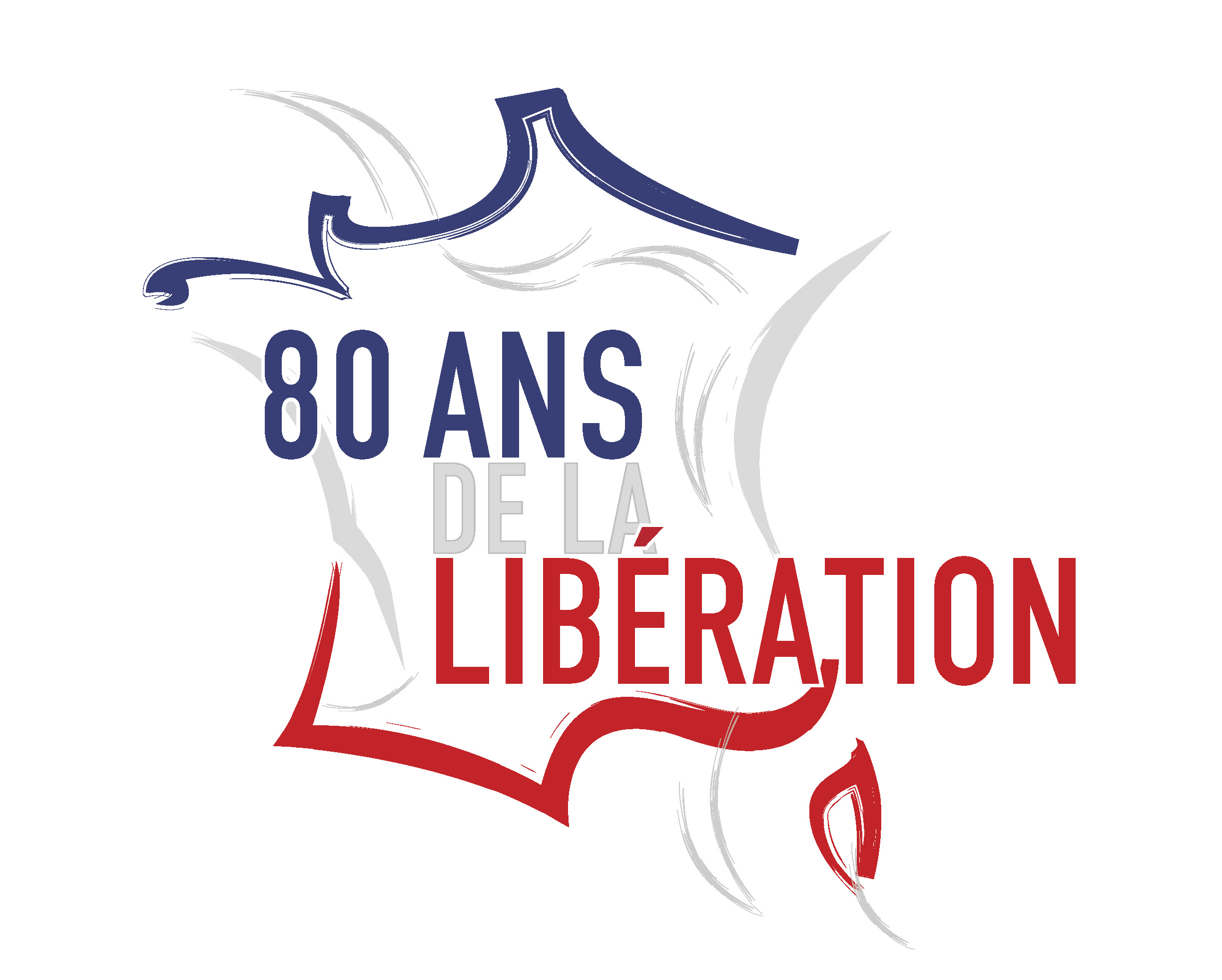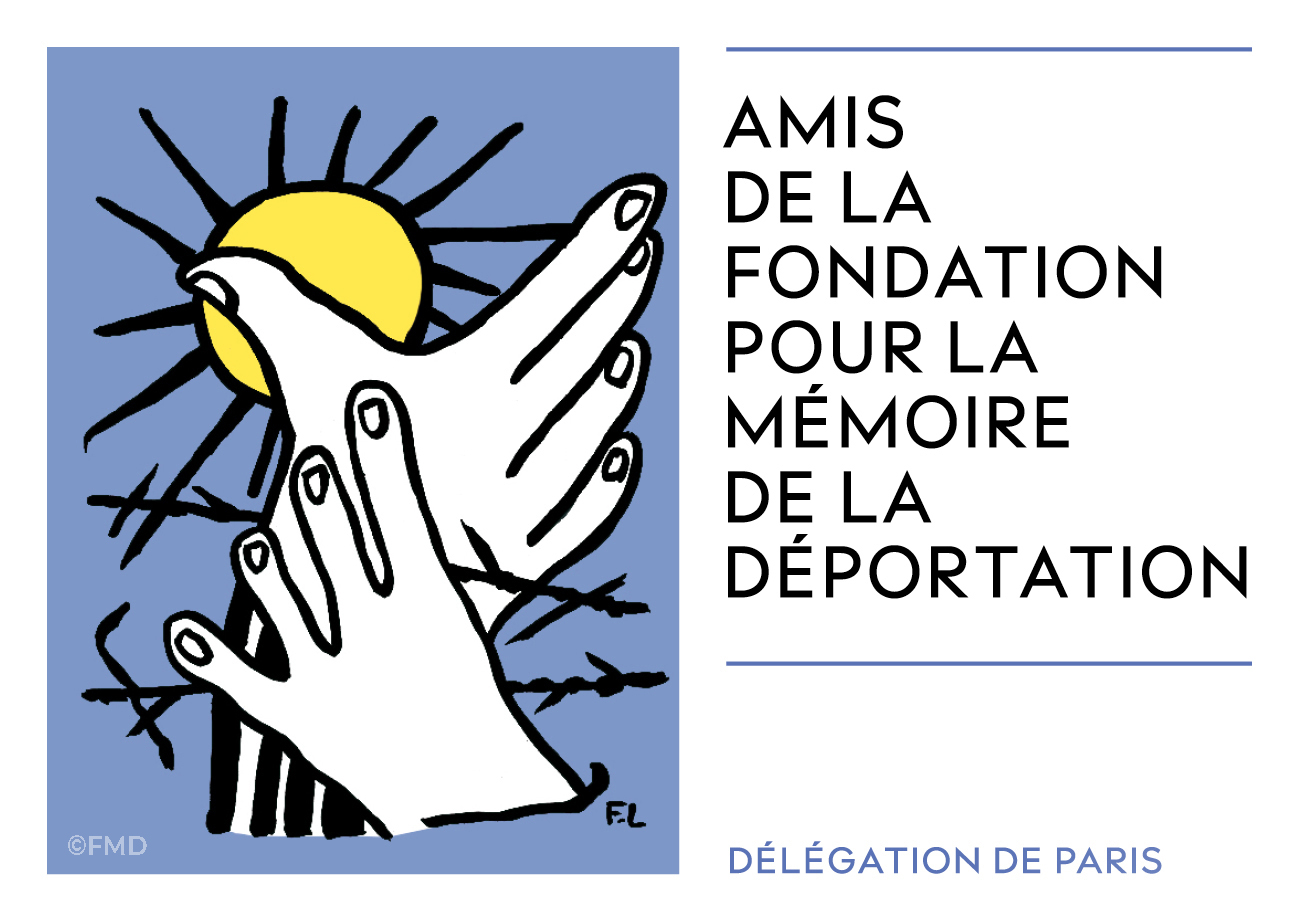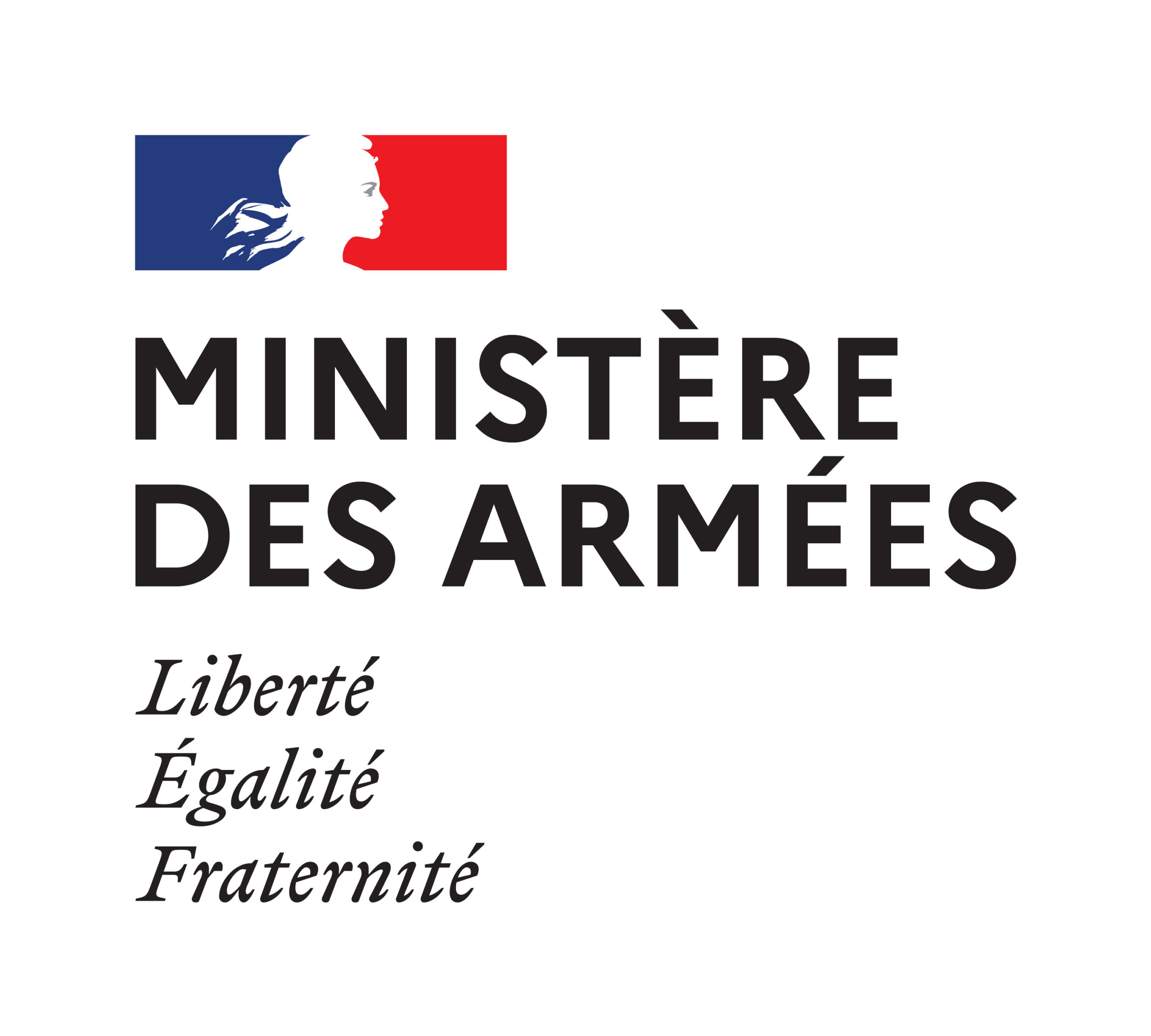DACHAU
OPENING : MARS 1933
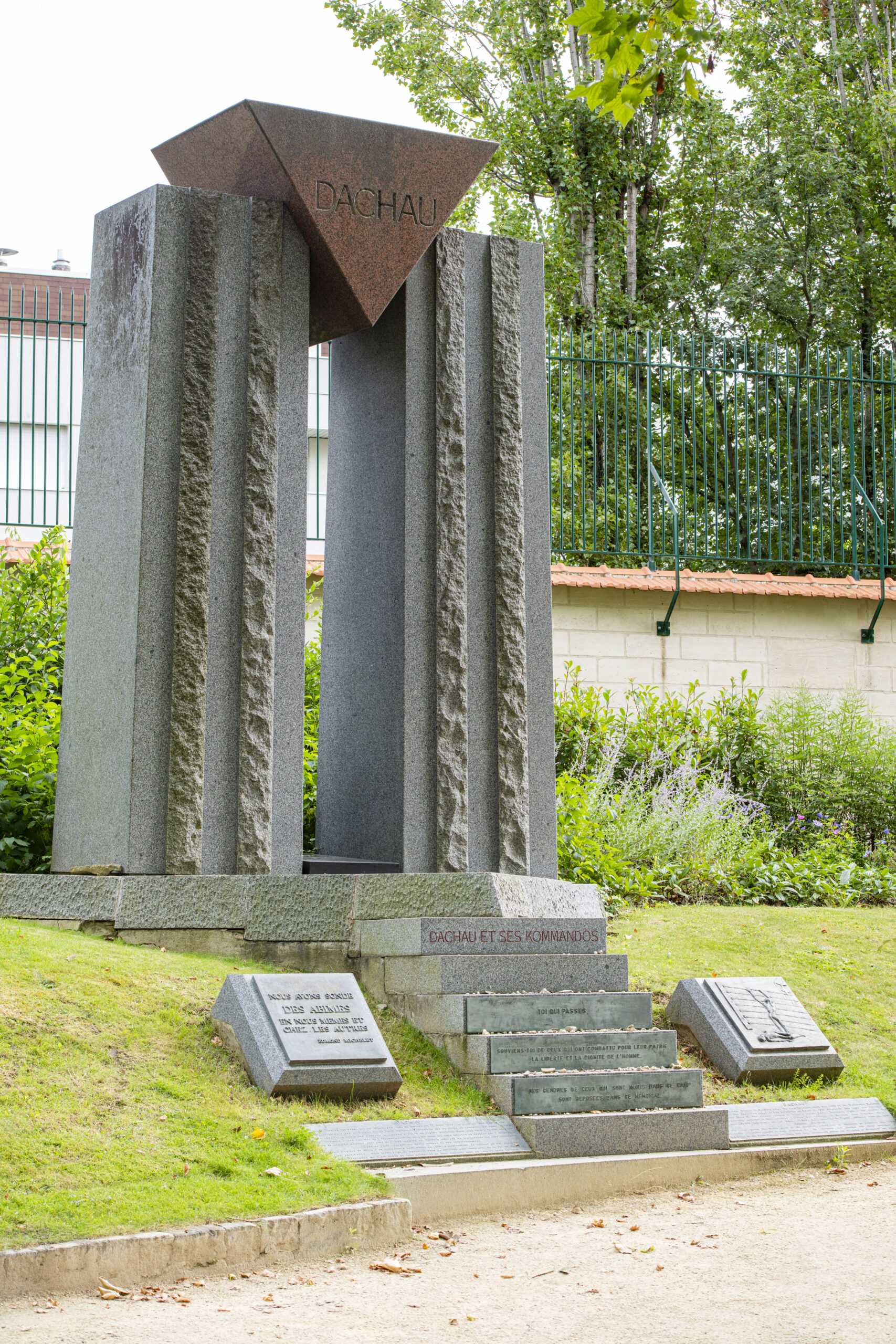
© Vincent Gerbet
Monument Description
Opened on June 1st, 1985, the architects behind the memorial are Louis Doco and François Spy.
A red granite triangle from Finland supported by two columns of blue granite from Vire (Normandy) symbolizes the attire of the deportees : a striped prisoner uniform (jacket, trousers, and cap).
The monument signifies the narrow entrance of the camp and conveys a sense of oppression. Inscribed between the columns is « To the deceased of Dachau. Ashes from the crematorium, » where ashes of deportees who passed away in the camp are interred. The steps by the columns bear the poignant message :
Dachau and its Commandos – You who pass by, remember those who fought for their country, freedom, and human dignity.
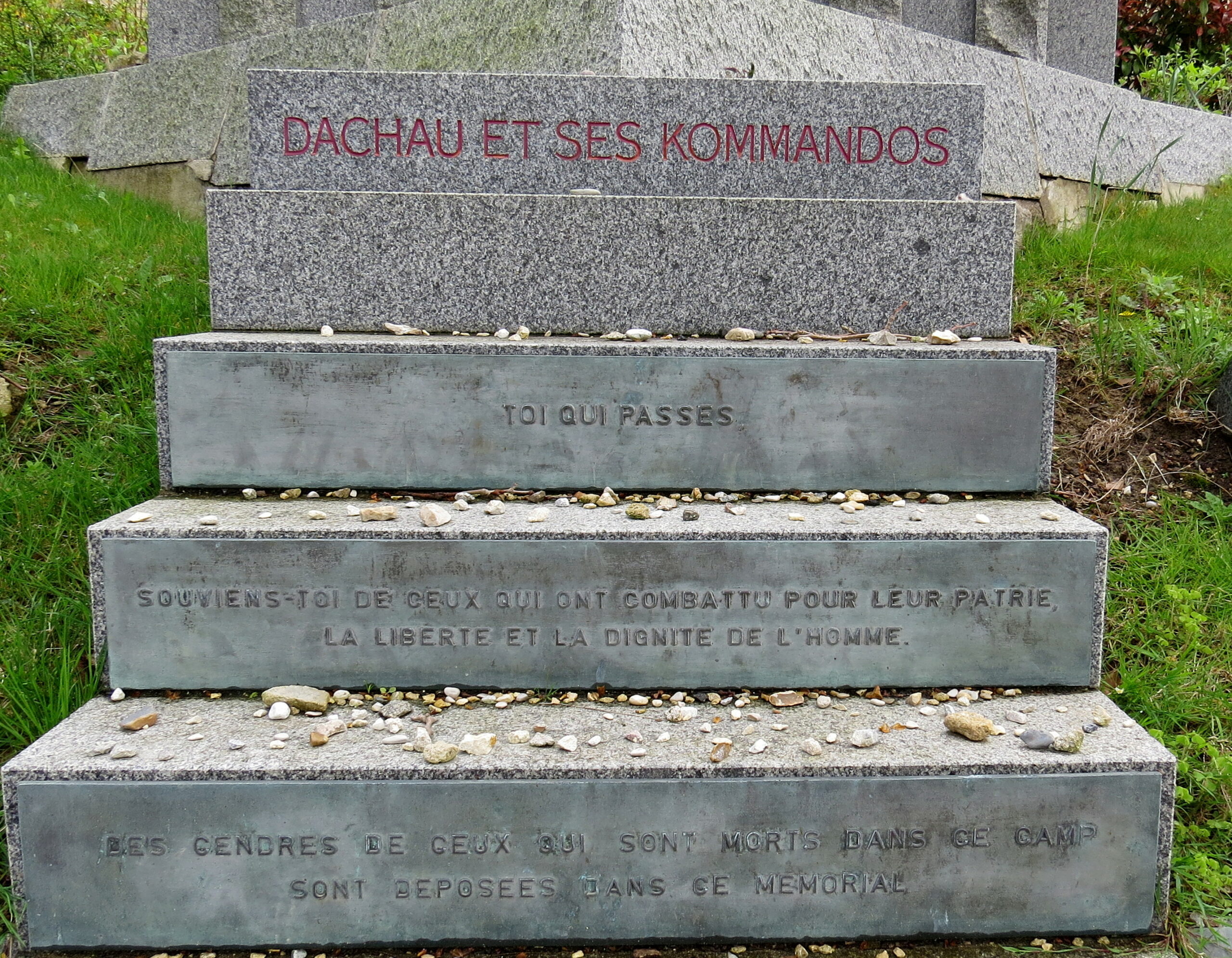
© AFMD 75
On both sides of the steps, plaques bear quotes from Edmond Michelet, a deportee to Dachau: « We have plumbed the depths within ourselves and in others. » Another plaque, engraved by sculptor Cyril Troisgros, depicts two deportees: one hanging on a fence of barbed wire, the other lying at his feet, electrocuted.
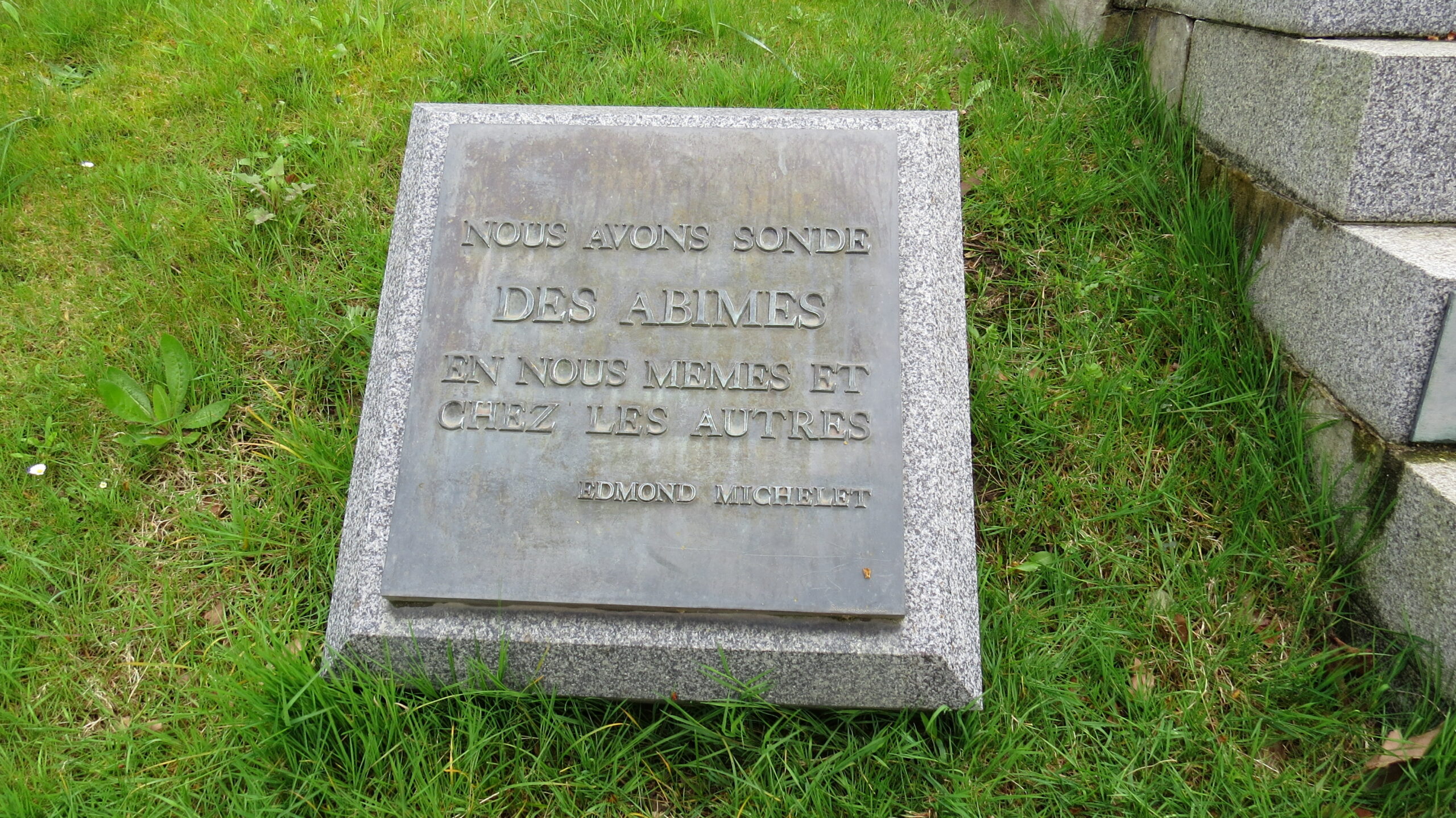
© AFMD 75
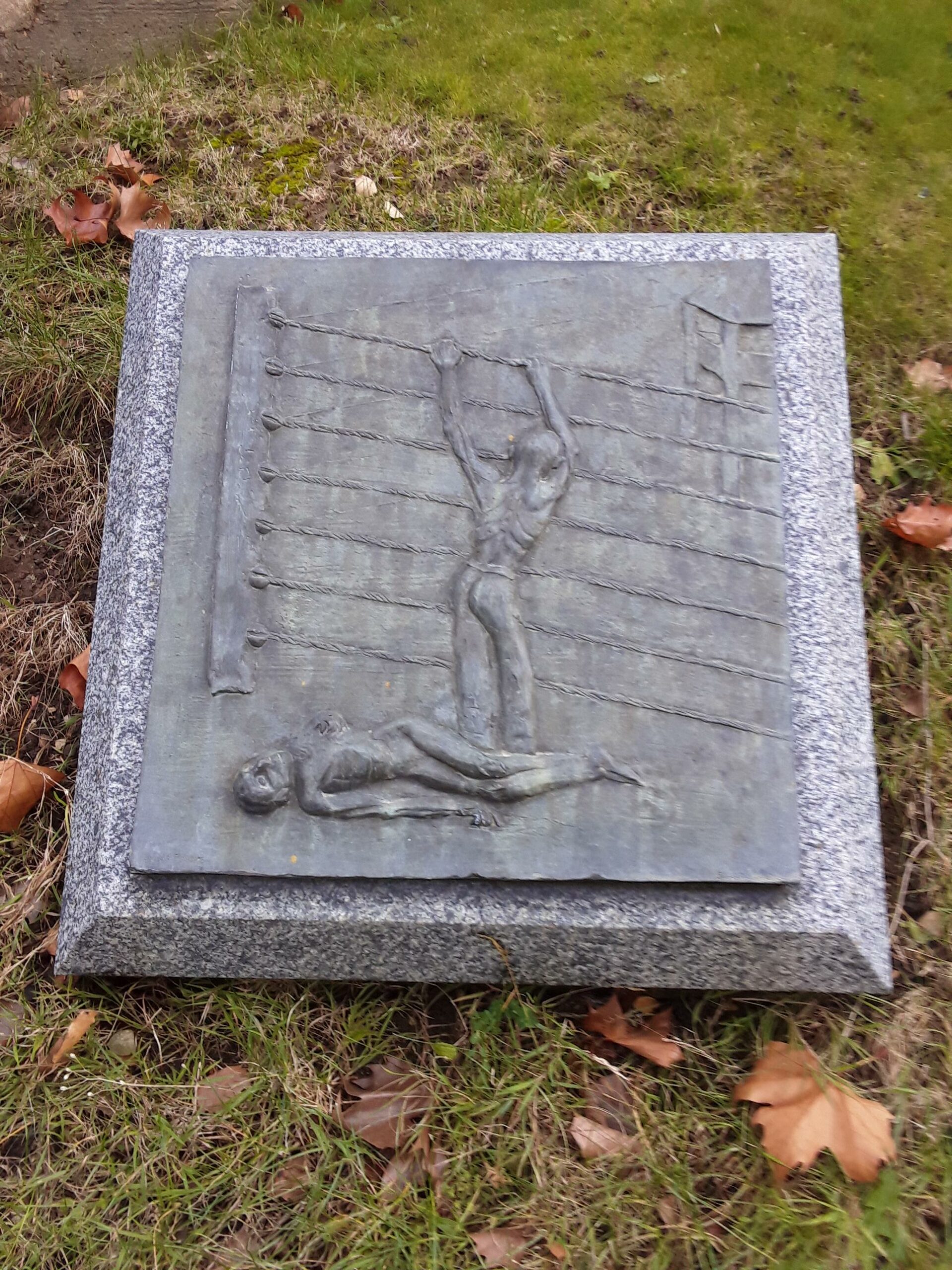
© AFMD 75
Below each plaque, a message written by the survivors (in French and English):
“Dachau is the place where the first concentration camp in Europe was built in Germany, near Munich, on 22 March 1933, by the National Socialist Party when it came to power. This camp was first to imprison German citizens opposed to the Hitler regime. Then, later on, resistance fighters and victims of Nazi oppression were deported there, arrested in the countries annexed or occupied by Germany. More than 200,000 detainees, including more than 12,000* arrested in France, were subjected to the most inhumane treatment.
In this camp, during the twelve years of its operation, tens of thousands of prisoners died of hunger, exhaustion, abuse or execution. We survivors erected this monument in its sobriety to witness to the Faith, Courage and Hope that have never ceased to animate and sustain us throughout our trial.”
* the number known in 2024 is corrected to 14,630.
Dachau Camp
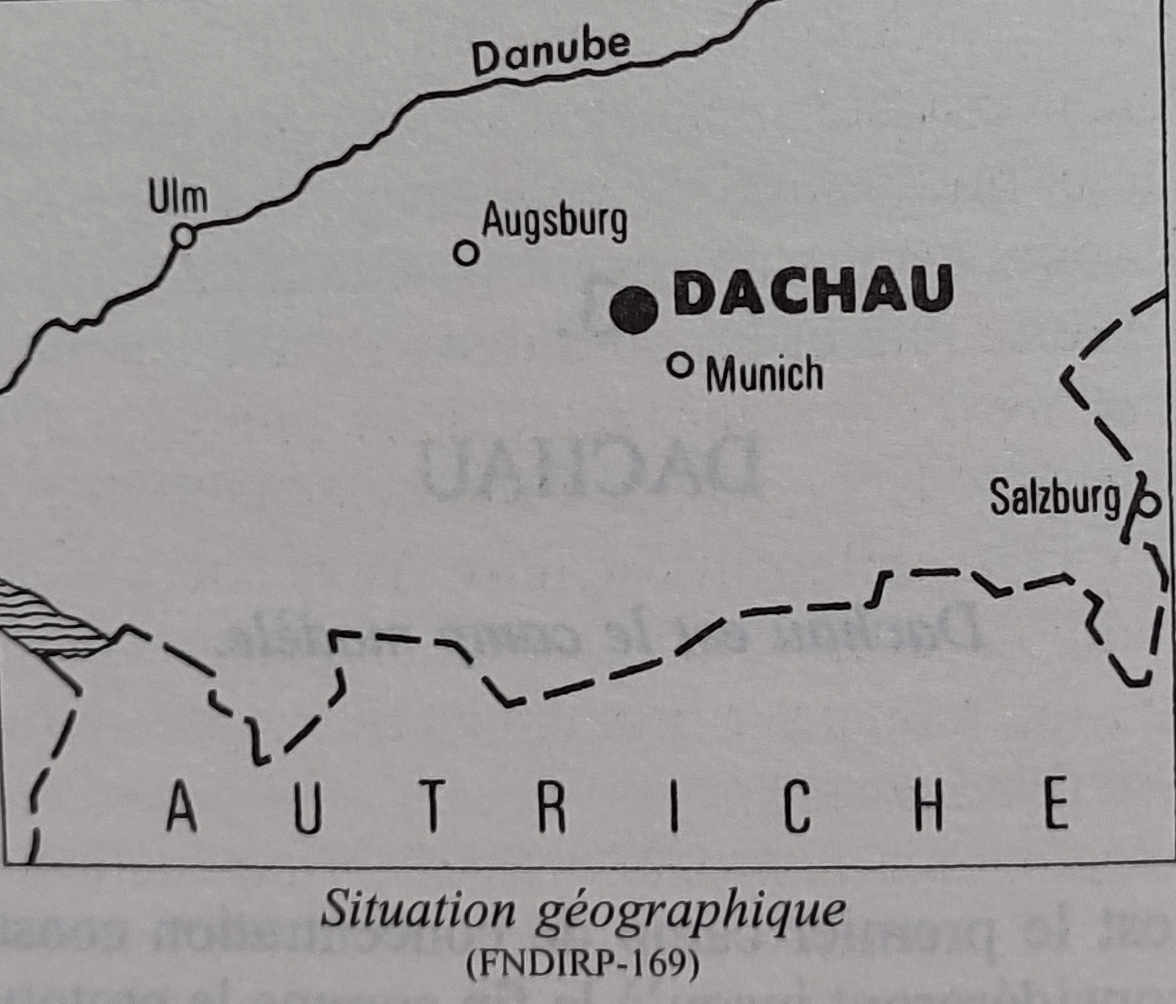
The Dachau concentration camp, located near Munich, Bavaria, in southern Germany, is the first camp set up by the Nazi regime, in a former munitions factory.
From March 20, 1933, the first prisoners were German citizens, anti-Nazi political opponents: social democrats, communists, trade unionists, sequestered for the purpose of repression and rehabilitation.
From 1936, Gypsies, Jehovah’s Witnesses, homosexuals and common rights were imprisoned. After the Anschluss (annexation of Austria in March 1938), Dachau received Austrian opponents and then after the annexation of the Sudetenland in September 1938 from the Czechoslovakians and after the November 1938 Pogrom («Kristallnacht» from 8 to 9 November) from the Jews.
A new nearby camp, built by the deportees themselves in a marshy area, opened in the spring of 1940.
From late 1941, religious, priests or pastors, German or foreign, are grouped there. They benefit from special conditions: exempt from work, they can receive parcels and attend a daily mass.
Later, public figures kept as hostages are interned there for exchange: English officers of the Intelligence Service, «deported of honor» like Léon Blum (former president of the French Council of Ministers) after his internment in Buchenwald.

Entrée du camp
Dachau and its 183 kommandos cover all of southern Germany.
These forced labour kommandos serve as labour for chemical industries (AGFA dependent on IG-FARBEN), automobiles (BMW), aeronautics (MESSERSCHMITT) and public works companies (construction of roads and landing grounds, repairs of railway lines, etc.). From 1940, the prisoners were exploited for the war industry.
The most important kommandos are Landsberg, Kaufering, Kempten, Allach, which initially had 3,500 detainees until 14,000 at the end of the war.
Medical experiments are conducted on detainees by Air Force and SS doctors on human resistance to surviving at very high altitudes and on decompression at altitude.
Twelve years after its opening, the Dachau camp was liberated on April 29, 1945 by the American army. This camp was the longest in service.
200,000 inmates received a service number – more than 41,500 deceased.
After the Allied landing in Normandy, several convoys left the camp of Compiègne-Royallieu towards Dachau on June 18, Besançon on June 24, Bordeaux on June 28, Lyon on June 29, 1944.
The following month, two convoys have a particular destiny, «The train of death» and «The Phantom train»
« The train of death »
July 2, 1944 leaves Compiègne convoy 79 09 with 2,162 men packed in twenty-two wagons. It is the largest convoy in number of prisoners party of Compiègne. It remained known as the « Train of Death » because of the high proportion of deaths that occurred during the journey.
Because of sabotage on the tracks, the train is forced to stop many times for several hours and especially in Saint-Brice-Courcelles near Reims where brave inhabitants of the village bring water. The July heat is suffocating in the cars, there is no ventilation except two small dormers. Men die of thirst, suffocate, go mad, fight, kill. Many die asphyxiated. The Germans ordered to put in the last two wagons the dead or the dying which they completed with a bullet in the head. 25% did not survive.
In Sarrebourg on July 4, the German Red Cross is allowed to distribute water and soup. When the convoy arrives in Dachau, 1,632 survivors receive a number.
However, in eight cars, no casualties were recorded: Resistance fighters had put in place discipline and imposed order.
This convoy will have 2 escapees during transport.
943 men will return to France (43.80%)
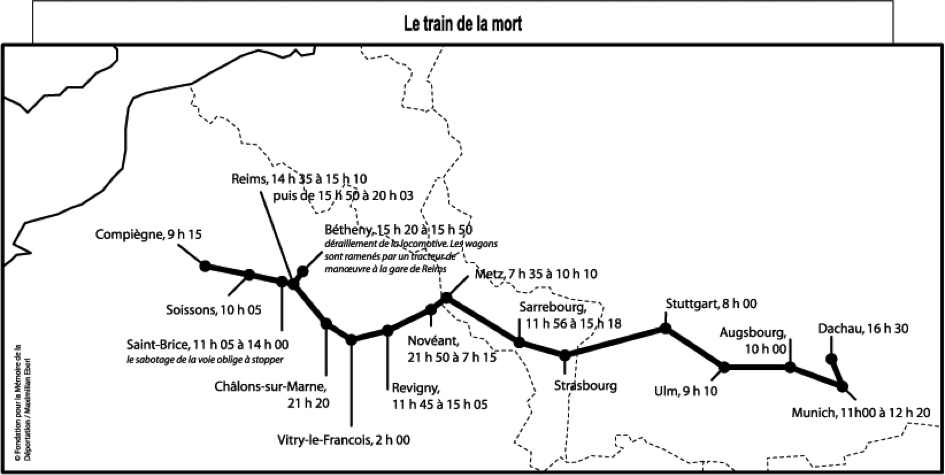
© FMD
«The Ghost Train»
“The Phantom Train” is one of the last convoys to leave for Germany, at a time when France is liberated, when Allied air forces are bombing railway tracks and locomotives, when guerrillas blow up stations and bridges to prevent German troops from moving.
In July 1944, in the South of France, 750 interned prisoners, including 64 women, are handed over to the Germans by the French police: half of them are foreigners interned in the camp of Vernet d’Ariège (German and Austrian anti-Nazi, Spanish Republicans, Italian antifascists, former members of the International Brigades, some common rights…).
On 2 July, they are taken to the freight station of Toulouse and crammed into cattle wagons. There are 150 resisters, guerrillas, FTP-MOI (Francs-Shooters and Partisans-Immigrant Workers) out of the prison Saint-Michel of Toulouse and 24 women resisters.
On 12 July, after several days spent in the wagons, at a standstill, in Bordeaux, the detainees are taken to the disused synagogue transformed into a prison and the women to the Boudet barracks. They will stay there for four weeks.
On 9 August, 155 detainees were added to the Fort du Hâ de Bordeaux, including about 30 women. The train leaves and stops at Roquemaure where the railway bridges over the Rhone are destroyed. The detainees are forced to walk 17 kilometres in a scorching heat.
In Sorgues, about thirty escapes are favored by the benevolence of railway workers who bring water and food.
On 19 August, the train is restarted but is mitrailleuse. The train, reconstituted on the other side of the Drôme, continues its journey, appearing, disappearing, constantly reconstituting itself from where its name of «Ghost Train».
On 28 August, 536 men will receive a registration number in Dachau. The women will be transferred to the Ravensbrück camp.
In total 232 will die in deportation without forgetting those who died during the journey.
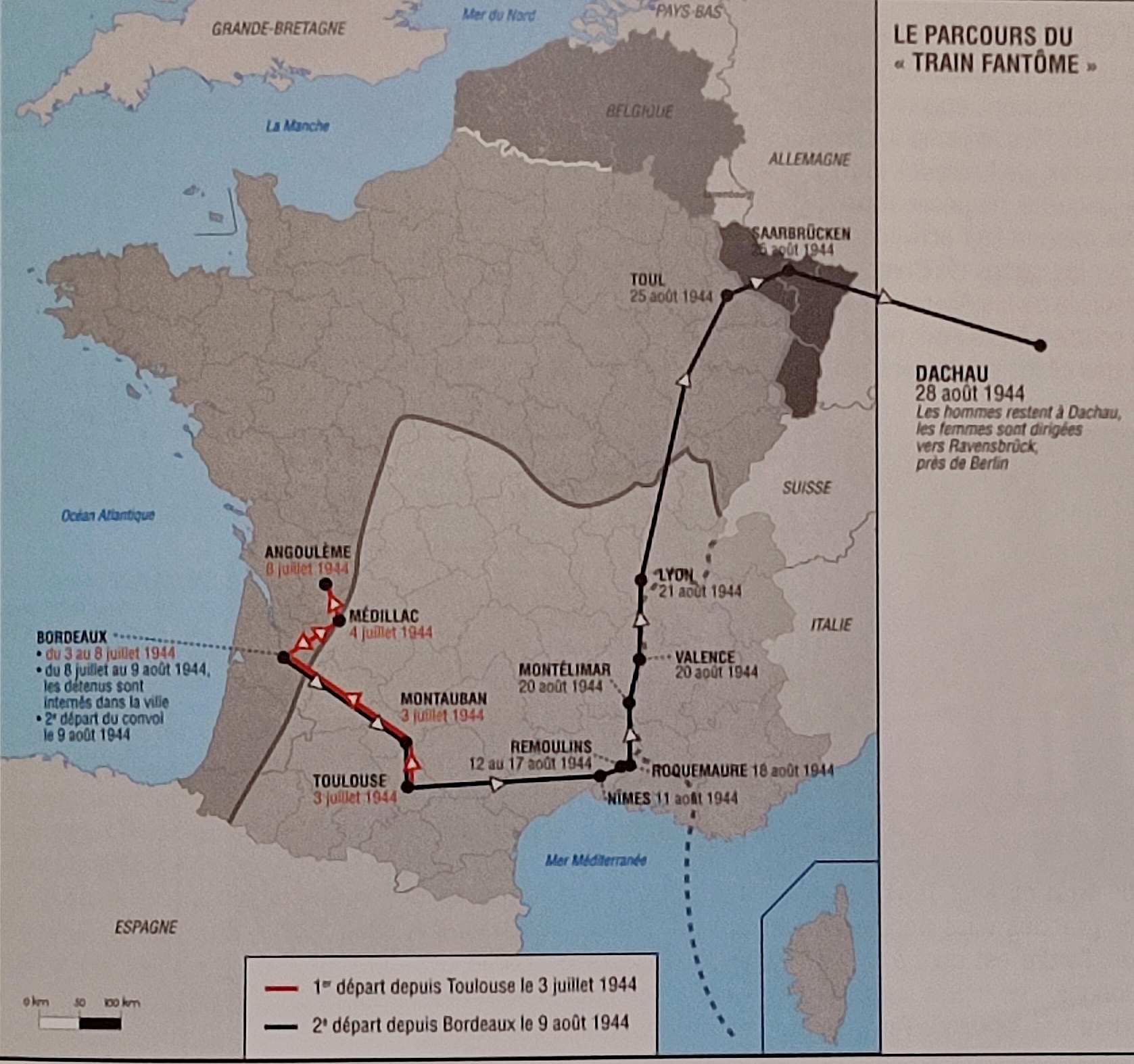
© Amicale des 800 déportés du Train Fantôme
Sources
Amicale du camp de concentration de Dachau : https://dachau.fr/
Dachau Concentration Camp Friendly: https://dachau.fr/
Amicale des Déportés Résistant du Train Fantôme, Le Train Fantôme July 1944 Brochure, ed. Sorgues Vaucluse, July 2015.
Amicale de Dachau, The train of death, brochure, 2012
www.appl-lachaise.net/monuments-aux-victimes-de-dachau
FMD Memorial Book: http://www.bddm.org/liv/details.php?id=I.240. (Train of Death)
FMD Memorial Book: http://www.bddm.org/liv/details.php?id=I.261 (Ghost Train)
FNDIRP (map of location)
Film: Ceremony of 3 July 2004 for the 60th anniversary of the passage of the train in the commune on 2 July 1944, Video workshop of the Foyer pour Tous de Saint-Brice- Courcelles, 2004
Film: The Resistance of the Ghost Train, Jorge Amat, written and narrated by Guy Scarpetta 2016
MICHELET Edmond, Rue de la Liberté: Dachau 1943-1945, Paris, Éd. du Seuil, 1955
Dachau
OPENING : MARS 1933

© Vincent Gerbet
Monument Description
Opened on June 1st, 1985, the architects behind the memorial are Louis Doco and François Spy.
A red granite triangle from Finland supported by two columns of blue granite from Vire (Normandy) symbolizes the attire of the deportees : a striped prisoner uniform (jacket, trousers, and cap).
The monument signifies the narrow entrance of the camp and conveys a sense of oppression. Inscribed between the columns is « To the deceased of Dachau. Ashes from the crematorium, » where ashes of deportees who passed away in the camp are interred. The steps by the columns bear the poignant message :
Dachau and its Commandos – You who pass by, remember those who fought for their country, freedom, and human dignity.

© AFMD 75
On both sides of the steps, plaques bear quotes from Edmond Michelet, a deportee to Dachau: « We have plumbed the depths within ourselves and in others. » Another plaque, engraved by sculptor Cyril Troisgros, depicts two deportees: one hanging on a fence of barbed wire, the other lying at his feet, electrocuted.

© AFMD 75

© AFMD 75
Below each plaque, a message written by the survivors (in French and English):
“Dachau is the place where the first concentration camp in Europe was built in Germany, near Munich, on 22 March 1933, by the National Socialist Party when it came to power. This camp was first to imprison German citizens opposed to the Hitler regime. Then, later on, resistance fighters and victims of Nazi oppression were deported there, arrested in the countries annexed or occupied by Germany. More than 200,000 detainees, including more than 12,000* arrested in France, were subjected to the most inhumane treatment.
In this camp, during the twelve years of its operation, tens of thousands of prisoners died of hunger, exhaustion, abuse or execution. We survivors erected this monument in its sobriety to witness to the Faith, Courage and Hope that have never ceased to animate and sustain us throughout our trial.”
* the number known in 2024 is corrected to 14,630.
Dachau Camp

The Dachau concentration camp, located near Munich, Bavaria, in southern Germany, is the first camp set up by the Nazi regime, in a former munitions factory.
From March 20, 1933, the first prisoners were German citizens, anti-Nazi political opponents: social democrats, communists, trade unionists, sequestered for the purpose of repression and rehabilitation.
From 1936, Gypsies, Jehovah’s Witnesses, homosexuals and common rights were imprisoned. After the Anschluss (annexation of Austria in March 1938), Dachau received Austrian opponents and then after the annexation of the Sudetenland in September 1938 from the Czechoslovakians and after the November 1938 Pogrom («Kristallnacht» from 8 to 9 November) from the Jews.
A new nearby camp, built by the deportees themselves in a marshy area, opened in the spring of 1940.
From late 1941, religious, priests or pastors, German or foreign, are grouped there. They benefit from special conditions: exempt from work, they can receive parcels and attend a daily mass.
Later, public figures kept as hostages are interned there for exchange: English officers of the Intelligence Service, «deported of honor» like Léon Blum (former president of the French Council of Ministers) after his internment in Buchenwald.

Entrée du camp
Dachau and its 183 kommandos cover all of southern Germany.
These forced labour kommandos serve as labour for chemical industries (AGFA dependent on IG-FARBEN), automobiles (BMW), aeronautics (MESSERSCHMITT) and public works companies (construction of roads and landing grounds, repairs of railway lines, etc.). From 1940, the prisoners were exploited for the war industry.
The most important kommandos are Landsberg, Kaufering, Kempten, Allach, which initially had 3,500 detainees until 14,000 at the end of the war.
Medical experiments are conducted on detainees by Air Force and SS doctors on human resistance to surviving at very high altitudes and on decompression at altitude.
Twelve years after its opening, the Dachau camp was liberated on April 29, 1945 by the American army. This camp was the longest in service.
200,000 inmates received a service number – more than 41,500 deceased.
After the Allied landing in Normandy, several convoys left the camp of Compiègne-Royallieu towards Dachau on June 18, Besançon on June 24, Bordeaux on June 28, Lyon on June 29, 1944.
The following month, two convoys have a particular destiny, «The train of death» and «The Phantom train»
« The train of death »
July 2, 1944 leaves Compiègne convoy 79 09 with 2,162 men packed in twenty-two wagons. It is the largest convoy in number of prisoners party of Compiègne. It remained known as the « Train of Death » because of the high proportion of deaths that occurred during the journey.
Because of sabotage on the tracks, the train is forced to stop many times for several hours and especially in Saint-Brice-Courcelles near Reims where brave inhabitants of the village bring water. The July heat is suffocating in the cars, there is no ventilation except two small dormers. Men die of thirst, suffocate, go mad, fight, kill. Many die asphyxiated. The Germans ordered to put in the last two wagons the dead or the dying which they completed with a bullet in the head. 25% did not survive.
In Sarrebourg on July 4, the German Red Cross is allowed to distribute water and soup. When the convoy arrives in Dachau, 1,632 survivors receive a number.
However, in eight cars, no casualties were recorded: Resistance fighters had put in place discipline and imposed order.
This convoy will have 2 escapees during transport.
943 men will return to France (43.80%)

© FMD
«The Ghost Train»
“The Phantom Train” is one of the last convoys to leave for Germany, at a time when France is liberated, when Allied air forces are bombing railway tracks and locomotives, when guerrillas blow up stations and bridges to prevent German troops from moving.
In July 1944, in the South of France, 750 interned prisoners, including 64 women, are handed over to the Germans by the French police: half of them are foreigners interned in the camp of Vernet d’Ariège (German and Austrian anti-Nazi, Spanish Republicans, Italian antifascists, former members of the International Brigades, some common rights…).
On 2 July, they are taken to the freight station of Toulouse and crammed into cattle wagons. There are 150 resisters, guerrillas, FTP-MOI (Francs-Shooters and Partisans-Immigrant Workers) out of the prison Saint-Michel of Toulouse and 24 women resisters.
On 12 July, after several days spent in the wagons, at a standstill, in Bordeaux, the detainees are taken to the disused synagogue transformed into a prison and the women to the Boudet barracks. They will stay there for four weeks.
On 9 August, 155 detainees were added to the Fort du Hâ de Bordeaux, including about 30 women. The train leaves and stops at Roquemaure where the railway bridges over the Rhone are destroyed. The detainees are forced to walk 17 kilometres in a scorching heat.
In Sorgues, about thirty escapes are favored by the benevolence of railway workers who bring water and food.
On 19 August, the train is restarted but is mitrailleuse. The train, reconstituted on the other side of the Drôme, continues its journey, appearing, disappearing, constantly reconstituting itself from where its name of «Ghost Train».
On 28 August, 536 men will receive a registration number in Dachau. The women will be transferred to the Ravensbrück camp.
In total 232 will die in deportation without forgetting those who died during the journey.

© Amicale des 800 déportés du Train Fantôme
Sources
Amicale du camp de concentration de Dachau : https://dachau.fr/
Dachau Concentration Camp Friendly: https://dachau.fr/
Amicale des Déportés Résistant du Train Fantôme, Le Train Fantôme July 1944 Brochure, ed. Sorgues Vaucluse, July 2015.
Amicale de Dachau, The train of death, brochure, 2012
www.appl-lachaise.net/monuments-aux-victimes-de-dachau
FMD Memorial Book: http://www.bddm.org/liv/details.php?id=I.240. (Train of Death)
FMD Memorial Book: http://www.bddm.org/liv/details.php?id=I.261 (Ghost Train)
FNDIRP (map of location)
Film: Ceremony of 3 July 2004 for the 60th anniversary of the passage of the train in the commune on 2 July 1944, Video workshop of the Foyer pour Tous de Saint-Brice- Courcelles, 2004
Film: The Resistance of the Ghost Train, Jorge Amat, written and narrated by Guy Scarpetta 2016
MICHELET Edmond, Rue de la Liberté: Dachau 1943-1945, Paris, Éd. du Seuil, 1955
Délégation de Paris des Amis de la Fondation
pour la Mémoire de la Déportation
31 Boulevard Saint-Germain 75005 Paris
Contact : afmd.dt75@gmail.com
©AFMD75




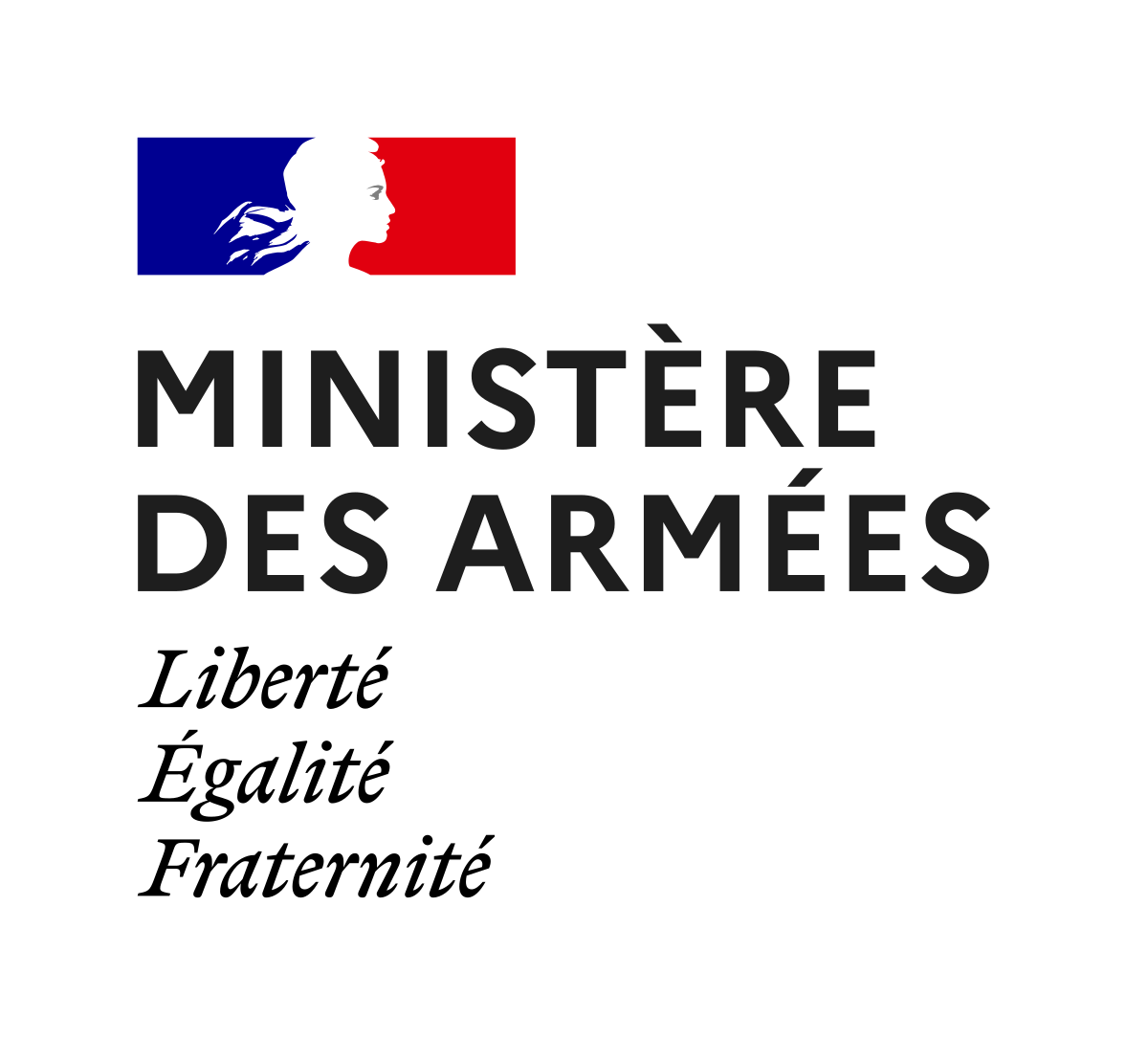
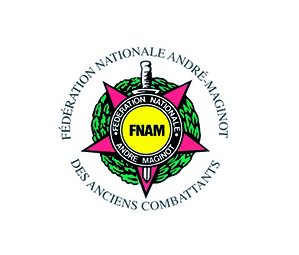
Délégation de Paris
des Amis de la Fondation
pour la Mémoire de la Déportation
31 Boulevard Saint-Germain
75005 Paris
Contact :
afmd75@gmail.com
©AFMD75
Délégation de Paris
des Amis de la Fondation
pour la Mémoire
de la Déportation
31 Boulevard Saint-Germain
75005 Paris
Contact
afmd75@gmail.com
©AFMD75

